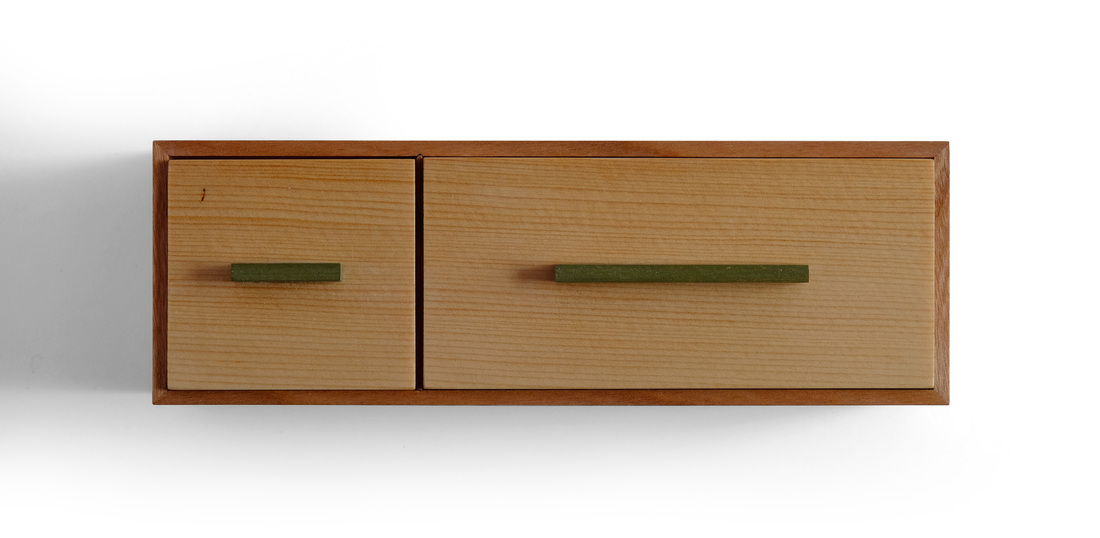 This box is similar to box 33. They have the same dimensions, the bottoms were constructed in the same way, and both boxes have lids that sit inside a rabbet. But for all that similarity, they really are quite different. I made them both as an exercise to see if I could make two boxes with their own souls even though they had several important similarities. If I'm being honest, I'll admit that it was as I was designing this box that I realized a similar one would work nicely with box 32, so I began designing this box and box 33 in parallel. It was fun to make two boxes at the same time, using the same milling procedures, the same machinery setups, etc. and end up with two distinct boxes. This version of the box sprung from my dissatisfaction with box 6, which is the one box I've made so far during this adventure that I don't even remotely like. Box 6 is a second take on a box I made several years ago (that's it in the photo just over there, on the right). This time I went back to the original woods, cherry and white pine. It's a very good combination. This pine is some seriously old stuff that grew wickedly slow. I have friend who likes old timber frames (OK, it's John Tetreault from Fine Woodworking). He's using a bunch of old frame parts to make a wood shed and art studio on his property. He cut some pine timbers (about 8 in. by 8 in.) short and gave me the offcuts. It has super tight grain and a beautiful, lustrous color. The white pine that you can buy at the lumber yard now is a sad, pale semblance to the good old stuff. To match the tight grain of the white pine top, I used some cherry edge grain that also had very tight grain lines. Although the woods are the same, I changed the dimensions dramatically. The original is 2 in. tall, 5 in. wide and 8 in. long. I wanted this one to be small and more rectangular. It's about 1 1/2 in. tall, 2 in. wide and 6 in. long. The divider is 2 in. from one end. I know I've harped about the importance of proportions, so I'll go easy this week, but good proportions are so terribly important. Get them wrong and the box is simply bad. The original version of the box had cocobolo pulls. I didn't want to repeat that, so I went with painted pulls. I wanted them to be green, and I got lucky that I had some divider material left over from box 31. I just ripped it to width, cut it to length and then painted the ends. Perfect. I like the green with the cherry and pine. Another slight change from the original involves the fabric on the inside. Back then I glued fabric to some thin foam. This time I glued it to the bottom before I installed the bottom in the box. I really like the clean look of the fabric in this box. (I also used a different blue fabric. This one has a softer look.) Please humor me as I let fly with a few random thoughts.
Jerry
11/20/2015 05:12:35 pm
One would not typically think of combining pine and cherry as primary woods, but the tight grain patterns of both woods here make it work out really nicely.
Matt Kenney
11/27/2015 09:10:08 pm
Jerry,
Michael
11/27/2015 09:32:45 am
Matt,
Matt Kenney
11/27/2015 09:07:36 pm
Thanks, Michael. And thanks again for reading. Comments are closed.
|
AuthorI love furniture design, and smart techniques. This blog is about both. Archives
August 2020
Categories |






 RSS Feed
RSS Feed